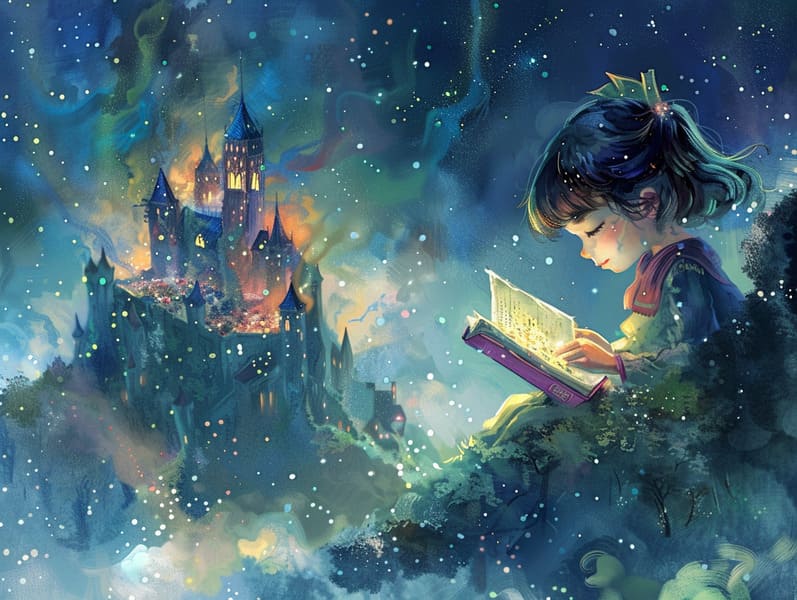The Genesis of Best Fairy Tales with the Invariable Beauty.
The Genesis of Best Fairy Tales with the Invariable Beauty.
Blog Article

Popular fairy tales have legendary status. These narratives have been whispered from one generation to the next far before they were ever published. They originated from a variety of cultures, including Middle Eastern traditions. They were initially disseminated among adults, often carrying themes and messages relevant to the societal norms and beliefs of the time.
Jacob and Wilhelm Grimm, Jacob and Wilhelm Grimm, were among the first to assemble many of these beloved fairy tales. Their anthology, "Grimm's Story Collection," included stories like "The Story of Cinderella," "Little Brother and Little Sister," and "Snow-White and Rose-Red," which have since become mainstays in the world of children's fairy tales. Similarly, Hans Andersen's fanciful fairy tales, such as "The Little Mermaid," and "The Little Duckling," have touched hearts worldwide, securing their place in the pantheon of famous fairy tales.
Even though they are old, these tales remain as relevant as ever, especially as children's bedtime stories. These whimsical stories are now available in numerous formats, including gorgeously illustrated books, fantastical animations, and digital fairy tales.
Their lasting appeal can be credited to several magical reasons:
Significant Morals: Timeless fairy tales often teach important moral lessons. Stories like "The Tale of the Boy Who Cried Wolf" teach the importance of honesty, while "The Hare and the Tortoise" stress the virtues of steadfastness and unassuming nature. These narratives offer children clear distinctions between ethical and unethical, building their moral compass in a tender yet lasting way.
Empathy and Awareness: Fairy tales frequently involve beings facing challenges and problems, prompting young readers to sympathize with their struggles and cheer for their triumphs. For instance, "The Story of Beauty and the Beast" demonstrates the significance of valuing inner qualities to perceive the real character of a being, building insight and insight.
Cultural Understanding: Many fairy tales are deeply ingrained in the cultural contexts from which they originated. Learning from these fairy tales can provide fascinating glimpses into different social structures, strengthening a sense of cultural awareness and awareness.
Imagination and Creativity: The fantastical elements in traditional fairy tales—magical beings—fire up children’s creative minds. These narratives carry readers to fantastical realms, engendering inventive thinking and a sense of astonishment that persists a lifetime.
Ancient fairy tales are not only fascinating but also informative. They provide entrancing tools in enhancing various thinking and feeling skills in children. When ancient fairy tales are voiced, they promote communication skills by bringing new word meanings and complex sentence structures. This practice also strengthens auditory skills and mindfulness, as young readers keep up with the story, prepared to see what happens next.
Furthermore, conversing about the themes and characters of traditional fairy tales can promote evaluative skills and evaluative skills. The young are educated to spot patterns, anticipate outcomes, and understand cause and effect. These discussions also assist kids convey their thoughts and feelings, cultivating their emotional intelligence.
In today’s electronic age, the existence of digital fairy tales has made these narratives more obtainable than ever. Web-based platforms and programs supply ample collections of old fairy tales that can be viewed or listened through anytime, anywhere. Fairy tales voiced are particularly well-liked, sharing an enjoyable way for kids to delight in these delightful tales. Spoken stories and read-out-loud stories take characters and settings to life, often enhanced by bewitching harmonies and musical scores that augment the storytelling experience.
The enduring charm of timeless fairy tales lies in their ability to shift to present days while sustaining their central messages. Contemporary renditions of these narratives often showcase more representative protagonists and modern settings, making them familiar to today’s audience. However, the key lessons of valour, generosity, and honesty remain unchanged, continuing to reach young readers of all ages.
Ancient fairy tales also offer a sense of protection and comprehensibility. They render accessible a structured narrative with a evident beginning, middle, and end, often ending with the settlement of conflicts and the triumph of rightness over wrongness. This uniformity can be encouraging for kids, showcasing a sense of sturdiness in an ever-changing world.
Timeless fairy tales continue to mesmerize and inform new generations, maintaining their elegance and significance in modern society. As children's night stories, they deliver a perfect blend of charm and enlightenment, supporting moral values, empathy, and creativity. The prevalence of online storybooks and the likability of fairy tales recited affirm that these classic narratives remain attainable to new generations.
By holding onto and narrating these narratives, click here we continue to cherish the rich tapestry of storytelling and cultural heritage. Whether you are perusing a colorful picture book, enjoying a electronic collection, or listening to an spoken story, the mystique of Grimm's fairy tales is always within reach. These narratives point out of the unwavering power of narratives and its ability to unify us across time and space.
Be it you are browsing a gorgeously illustrated book, browsing a web collection, or listening through an read-aloud book, the grace of popular fairy tales is always within reach.
These fairy tales convey of the endless presence of fairy tales and its ability to link us across eras and regions, weaving a spell that delights and instructs alike.